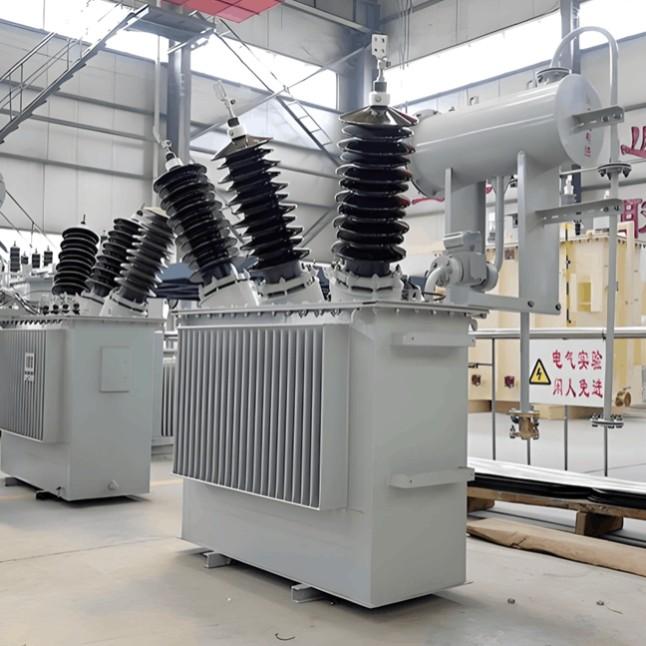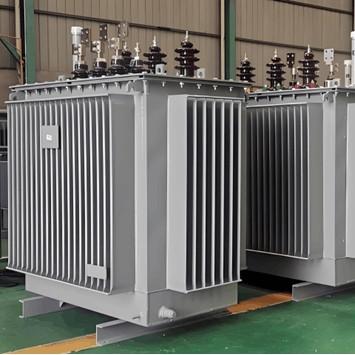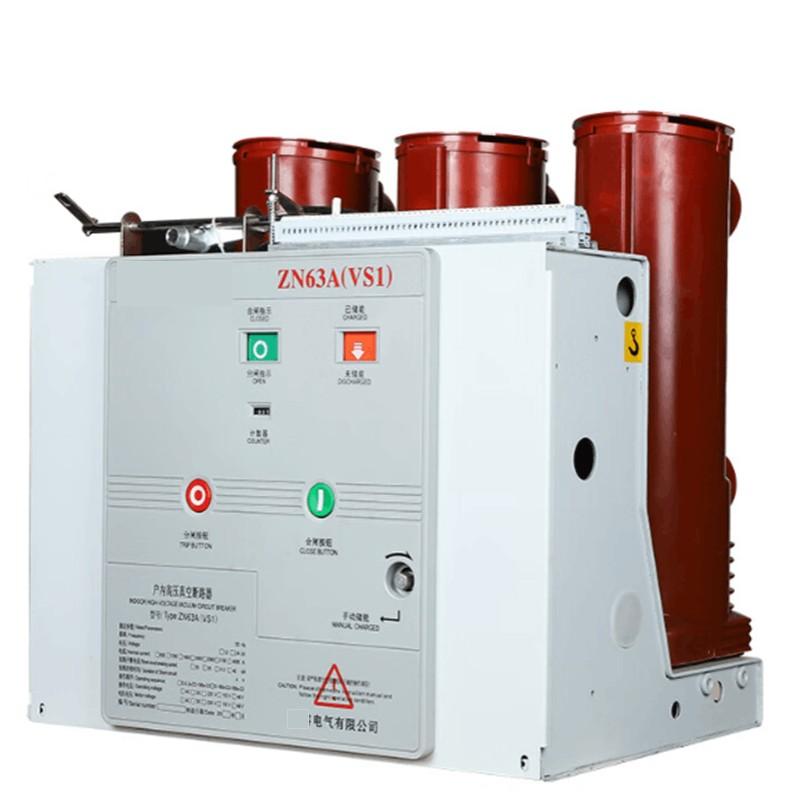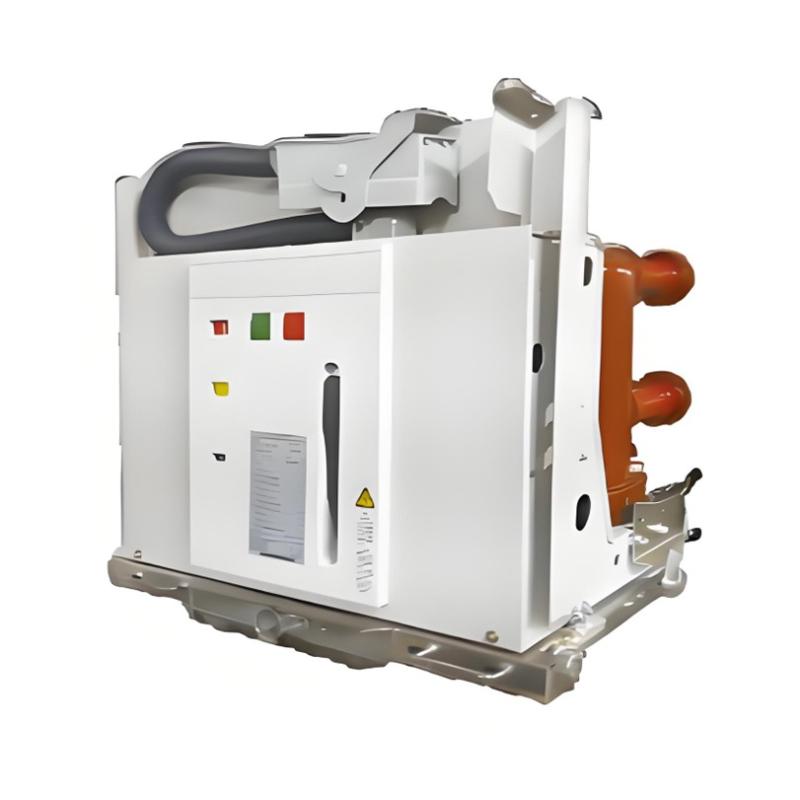What Is the Spring Operating Mechanism in High- and Medium-Voltage Circuit Breakers?
The spring operating mechanism is a critical component in high- and medium-voltage circuit breakers. It uses the elastic potential energy stored in springs to initiate the opening and closing operations of the breaker. The spring is charged by an electric motor. When the breaker operates, the stored energy is released to drive the moving contacts.
Key Features:
The spring mechanism utilizes elastic energy stored in springs.
It initiates the opening and closing operations of the circuit breaker.
The spring is charged by a motor and releases its stored energy during operation to drive the moving contacts.
How Does the Hydraulic Operating Mechanism Work in High-Voltage Circuit Breakers?
The hydraulic operating mechanism in high-voltage circuit breakers is used to open or close the breaker contacts. It operates based on hydraulic fluid dynamics to control breaker movement. When operation is required, hydraulic pressure is released, causing the contacts to open or close as needed. The incompressibility and fluidity of hydraulic systems make them ideal for delivering the fast, powerful motion required in high-voltage switching.
Note: The diagram below illustrates the principle of a hydraulic-spring mechanism. The HMB series is a well-known pioneer in this technology.
Key Features:
The hydraulic mechanism uses fluid dynamics to control breaker operation.
Hydraulic pressure is released to open or close the contacts when needed.
The system’s incompressibility and flow characteristics make it suitable for fast, high-force operations in HV applications.
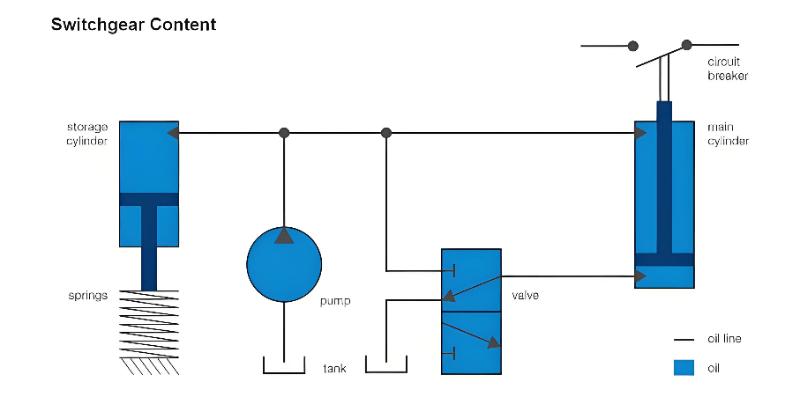
What Is the Role of Motor-Driven Operating Mechanisms in High-Voltage Circuit Breakers?
Motor-driven operating mechanisms are used in high-voltage circuit breakers to control switching operations. This mechanism uses an electric motor to charge the spring or directly drive the moving parts. The motor rotates to wind the spring or move components, thereby opening or closing the circuit. This design offers high precision and control, essential for managing high-voltage systems.
Note: After ABB introduced the motor-driven mechanism, several domestic companies (e.g., PG) developed similar designs over a decade ago. However, most such projects were eventually discontinued and are rarely seen today.
Key Features:
The motor-driven mechanism uses an electric motor to control breaker operation.
The motor charges the spring or directly moves components to open or close the circuit.
It provides high precision and control, necessary for high-voltage applications.
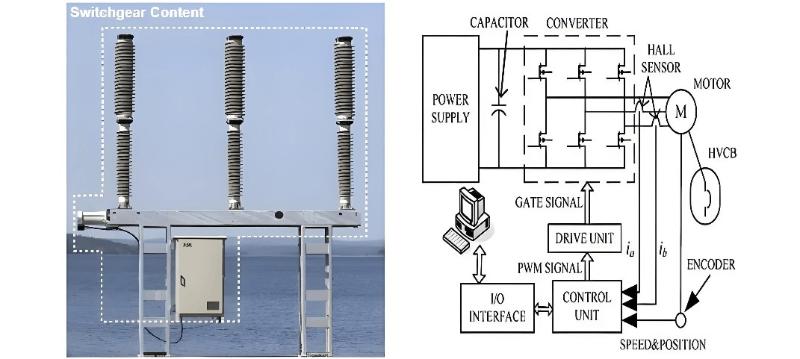
Magnetic Operating Mechanisms in Medium-Voltage Circuit Breakers
The magnetic operating mechanism in medium-voltage circuit breakers uses magnetic force to operate the breaker. It involves a solenoid — a coil that generates a magnetic field when current flows through it. When energized, the magnetic field rapidly pulls the contacts apart, interrupting the circuit. This mechanism is highly reliable and provides fast actuation, making it particularly suitable for MV applications.
Key Features:
The magnetic mechanism uses force generated by a magnetic field to operate the breaker.
It involves a solenoid (coil) that produces a magnetic field when energized.
The magnetic force rapidly separates the contacts, enabling fast, reliable operation ideal for MV systems.
How Does the Choice of Operating Mechanism Affect Breaker Performance?
The choice of operating mechanism significantly impacts circuit breaker performance. Each type — spring, hydraulic, motor-driven, and magnetic — has unique advantages and suits different voltage levels and applications.
Spring mechanisms are widely used due to their simplicity and reliability.
Hydraulic mechanisms offer precise, high-power control, ideal for high-voltage applications.
Motor-driven mechanisms provide high accuracy and programmability.
Magnetic mechanisms are highly reliable with fast response times, ideal for MV vacuum breakers.
Ultimately, the selection depends on the specific application requirements, including voltage level, load conditions, and environmental factors.
Summary:
Operating mechanism choice significantly affects breaker performance.
Each type (spring, hydraulic, motor-driven, magnetic) has distinct advantages for different voltages and uses.
Selection should be based on application-specific needs, not just cost.
Future Trends in Circuit Breaker Operating Mechanisms
As technology advances, we can expect innovations that will shape the future of operating mechanisms:
Materials science may lead to more durable, efficient springs for spring mechanisms.
Hydraulic technology improvements could yield more precise and reliable systems.
Motor technology may enable smaller, more energy-efficient motor-driven mechanisms.
Magnetic technology could be enhanced for faster, more robust actuation.
These advancements will lead to more efficient, compact, and reliable operating mechanisms.
Summary:
Technological progress will shape the future of operating mechanisms.
Advances in materials, hydraulics, motors, and magnetics will improve performance.
Future mechanisms will be more efficient, reliable, and compact.
Maintenance Requirements for Different Circuit Breaker Operating Mechanisms
Maintenance needs vary by mechanism type:
Spring mechanisms: Require regular inspection and lubrication to ensure spring integrity and mechanical smoothness.
Hydraulic mechanisms: Need periodic checks for oil leaks and fluid condition; seals and valves may degrade over time.
Motor-driven mechanisms: Require inspection of motor health, brushes (if applicable), and electrical connections.
Magnetic mechanisms: Generally low maintenance, but the solenoid and electrical connections should be inspected periodically.
Summary:
Maintenance requirements depend on the mechanism type.
Spring and hydraulic mechanisms require more mechanical upkeep; motor-driven units need electrical checks.
Magnetic mechanisms are low-maintenance but still require periodic inspection.
How Does the Operating Mechanism Affect Circuit Breaker Cost?
The mechanism type directly impacts the cost of the circuit breaker:
Spring mechanisms are typically lower cost due to their simple, robust design.
Hydraulic, motor-driven, and magnetic mechanisms are more complex and generally more expensive.
However, selection should not be based solely on cost. Factors such as voltage level, load profile, environmental conditions, and reliability requirements must be considered. Spring mechanisms generally have lower operating energy, while hydraulic mechanisms deliver higher operating force.
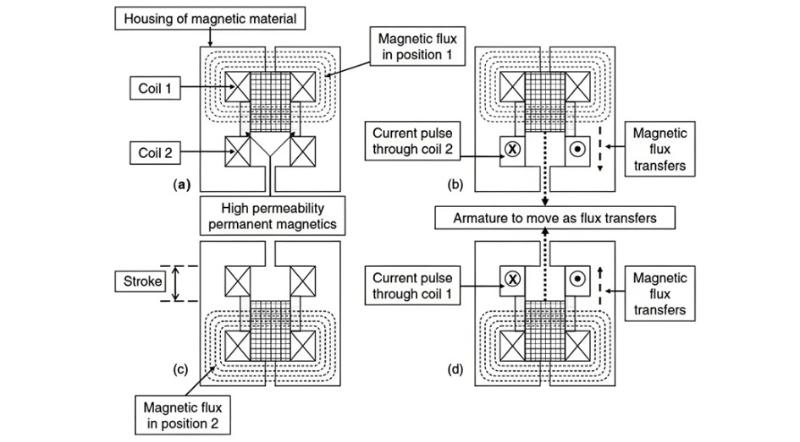
Summary:
Mechanism type affects overall cost.
Spring mechanisms are cost-effective; hydraulic, motor-driven, and magnetic types are more expensive.
Choice should be based on technical requirements, not just initial cost.
Environmental Impact of Different Circuit Breaker Operating Mechanisms
Different mechanisms have varying environmental impacts:
Spring mechanisms: Minimal environmental impact — they rely on mechanical energy with no fluids or emissions.
Hydraulic mechanisms: Risk of oil leakage, which can cause soil and water contamination. Hydraulic fluid disposal must be managed carefully.
Motor-driven mechanisms: Consume electrical energy, contributing to operational energy use and carbon footprint.
Magnetic mechanisms: Generally eco-friendly, but energy is required to generate the magnetic field.
Summary:
Environmental impact varies by mechanism.
Hydraulic systems pose leakage risks; motor-driven systems increase energy consumption.
Magnetic mechanisms are environmentally friendly, though energy use should be considered.
Summary: Reliability of Spring Mechanisms in High-Voltage Applications (35kV and Above)
For high-voltage circuit breakers (35kV and above), spring mechanisms are structurally simple and theoretically more reliable. However, recent power grid operation experience shows that spring mechanisms are not without issues, including:
Spring fatigue leading to incomplete opening/closing
Latching component jamming causing failure to operate
Shaft-hole deformation altering tripping characteristics, resulting in maloperation or failure
Additionally, BLK-series coiled springs have shown cases of spring fracture due to poor environmental tolerance (e.g., temperature, humidity).
To detect defects in breakers and their mechanisms during routine testing, extensive research has been conducted worldwide. While many testing devices and analytical methods exist, using test signals and advanced analytics to assess and improve mechanism reliability remains a challenging and ongoing task.













